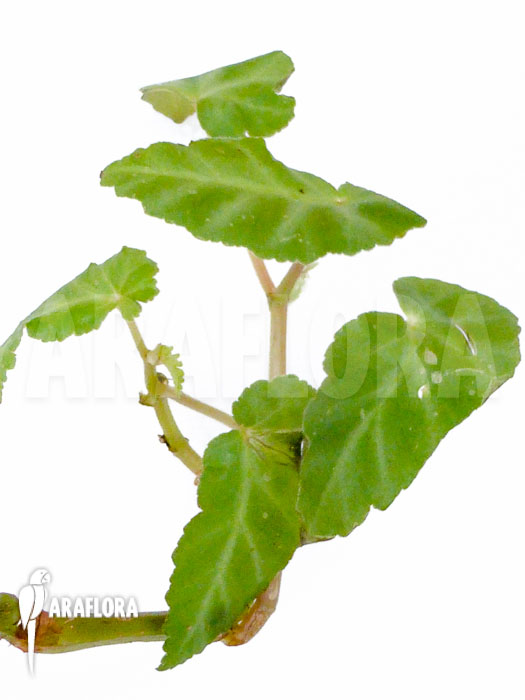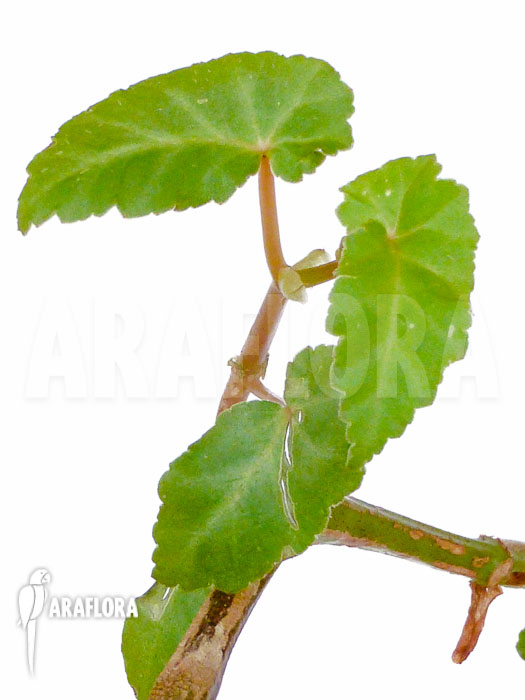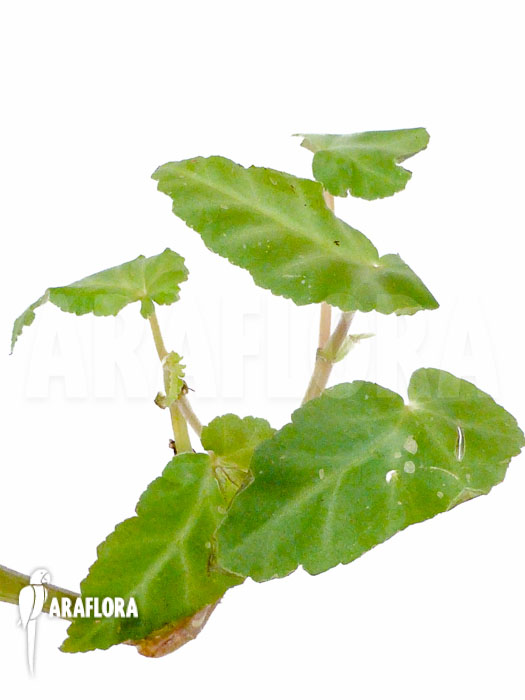Begonia angularis - Begonia75
Begonia angularis - Begonia75
Begonia angularis comes originally from Brazil. It has silver green leaves, one half of which is clearly enlarged. Combined with pale bluish-green veins this creates an interesting effect. The leaves are fairly large with reddish stems. The flowers grow in large bunches on long red stalks. Begonia angularis can be kept in a terrarium or in a pot as a houseplant.
Currently not in stock
€ 0,00
Keep me up to date?
Araflora will inform you as soon as the product is available again. Please fill in your e-mail address and we will let you know as soon as the product is back in stock. You will get an e-mail message when the product is available again. Unfortunately we cannot say how long this will be or what the price is likely to be.

Receive an e-mail when new stock of this plant arrives.
Share this plant? Press on one of the following icons.
In the wild, Begonia angularis is found in the southern coastal provinces of Brazil. Its asymmetrical leaves have a metallic sheen. They are shaped like an arrowhead with a lobe on one side behind the attachment to the stem. White flowers growing in groups of more than ten at a time have a cluster of yellow stamens or similarly coloured pistils at the centre. Both male and female flowers are found on the same plant.


Begonia angularis is easy to cultivate. It needs plenty of light but must not be exposed to direct sunlight. The best temperature is 22⁰C to 25⁰C but it must never be lower than 10⁰C or higher than 30⁰C. Daytime humidity should be around 70% and 90% at night. The growing medium must be kept moist, for instance by placing sphagnum moss round the base of the plant. Add fertiliser to the water once or twice a month. If Begonia angularis is cultivated in a terrarium, good air circulation will help prevent infection and disease. The best growing medium consists of peat and another type of material such as perlite. Go to ‘Plant accessories’ for more information about these and other useful products. Prune Begonia angularis if growth becomes excessive. The stems can also be removed in order to cut back the plant to a rosette of leaves.







 12 cm
12 cm
 6 cm
6 cm












